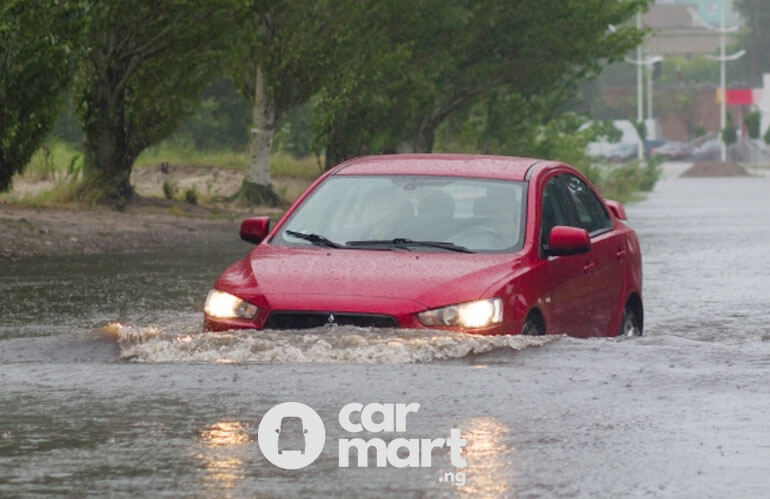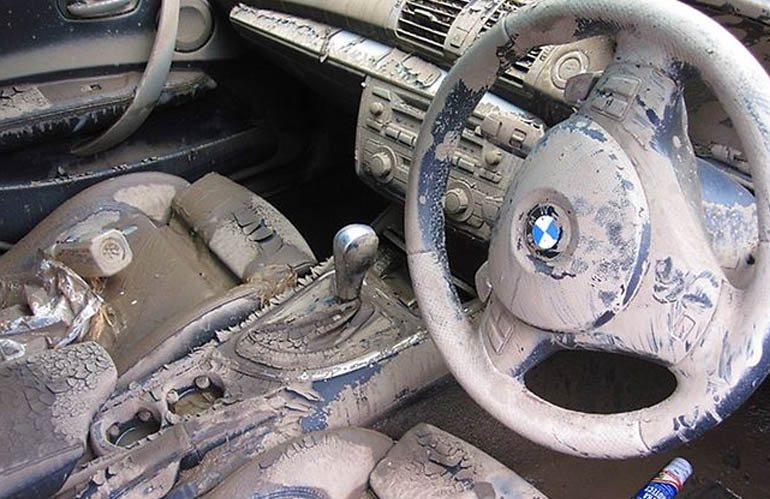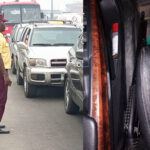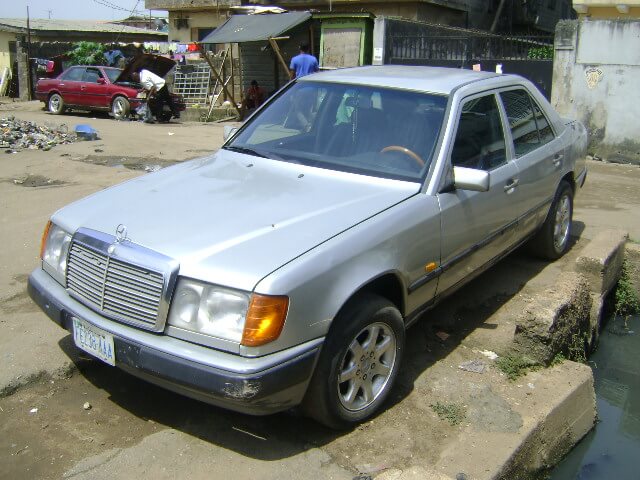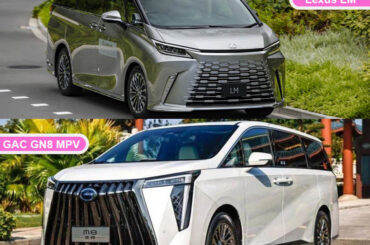While rains are cherished across the nation, it doesn’t take time for nature to lose control. And with recent floods in several parts of the country, vehicles have suffered a lot. If your car to has been a victim of flooding, here’s how you can check whether your car survived.
Table of Contents
Flood damage to your car doesn’t mean that it won’t work. It will still run after a few repairs, but the car will stop working in the long run if it sat in water for too long or if your mechanic is not experienced enough with flooded cars. If water gets in your car past the dashboard, significant parts in the vehicle will keep deteriorating in the engine and other internal car parts with time due to water damage.
Floods can damage the car’s electronics, lubricants, mechanical systems, and safety features such as airbags. If you ever feel like your car could have suffered flood damage, the best you can do is take the car to a mechanic, give them your suspicions and let them check it for any damages. Some damages are repairable if the water wasn’t much, but unfortunately, sometimes the car would be wrecked. While it seems unavoidable to have flood damage on your car, there are precautions you could take to make sure your car doesn’t suffer in times of flooding.
Check the Ignition
The literal “Key” to get your vehicle moving is the ignition system. While the ignition system is designed to efficiently start the engine, for a flood-affected car, ignition system damage can be catastrophic. Any damage to the starter motor or other key components can make you end up with a vehicle that won’t work. To check the ignition system, gently start your car only after the rain/water has receded and the car is completely dry. If you notice that the engine won’t start, or the ignition itself isn’t taking place, get your car checked.
Check The Engine
The heart and soul of your car, the engine can take a toll when your car is flood affected, with the most dreaded outcome being engine seizure. To check whether or not the engine has seized or not, start up the car and check if the engine turns on without any unusual noise. If yes, rev up a few times to see if everything is ok.
Check HeadLights
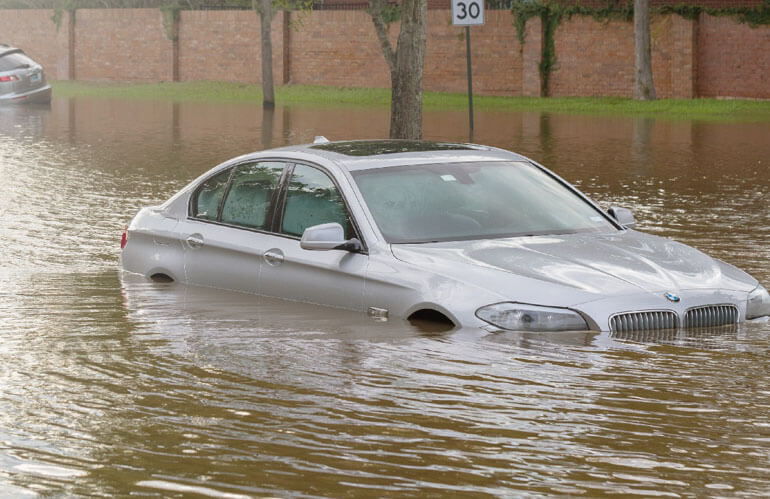
Your car comprises several complicated components that work together to help your car drive. The best way to check if everything is working well is by starting up your vehicle and waiting for a few minutes to keep an eye on the MID cluster. If any of the error lights pop up, make sure to get that part checked, also if any of the lights should have come up but don’t come, then get your vehicle checked.
Check Your Electronics
Electronics are sworn enemies; the biggest damage a car is exposed to due to flooding is electronic component failure. To make sure your car wasn’t the unlucky one, check key electronic components: light headlights, windows, stereo, sunroof, climate control/ac and any other system that is connected by a wire.
Check ABS, ESC, Airbags Etc
While components like windows, AC, sunroof etc., wouldn’t be too hard on your repair list, if components like ABS, ESC, Airbags etc. are damaged due to water, then your vehicle won’t be safe anymore. To check whether your car’s safety system has been affected by the flood, check for Abs/Airbag/ESC signs on the MID Cluster. If they are constantly on or are blinking get your vehicle checked.
Can a car still work after being flooded?

The first thing you should avoid doing when you find your car in a flood is turning on the engine. When you turn on an engine with water, the cylinder block and piston will endure excessive damage leaving you with a totalled car.
The amount of water damage your car experiences will determine whether it’s still repairable or not. If you drove your car through a pond on your way to work, the damage wouldn’t be much, the most that could be damaged is the brake linings, and you can change those.
On the other hand, if your car has submerged in water past the floorboards into the electrical areas, your insurance company will most probably declare it a total loss. Don’t get me wrong; there is still a possibility to dry it out and change the fluids in the car. But your car will still have electrical problems, musty odours, and silt in the seats. All this can be repairable or not, depending on your car model and how old it is. Older cars won’t survive such a hit.
Cars that are completely submerged in water during flooding can be more expensive to repair than buying a new car. To prevent going down this rabbit hole, let the mechanic observe the vehicle and tell you how much damage the car has endured. That’s when you can decide whether to repair or count your losses and buy a new car. But with proper insurance coverage, you might be compensated.
Can you save a flooded car?
It depends on the type of water that flooded the car. If you’re living in a coastal area, your car might have been flooded with salty water. If that’s the case, don’t even try to save it. That car is toast. Saltwater does damage to vehicles beyond repair.
If it’s fresh water, then your car can be repaired by an experienced mechanic. It would help if you didn’t let a mechanic who hasn’t dealt with flooded cars repair your car. Without experience in repairing flooded cars, there is no point for a mechanic to repair yours because they will make it worse, and you’ll end up losing a lot of money plus the car itself.
Electrical issues in a flooded car are what could cost you a lot of money. To be sure your car is totally fine, those must be fixed. If water got into your fuse box, control units, or modules, they would need replacing. The problem with such items is how expensive they are after significant hurricanes. You must replace them because if you don’t, they will cause problems down the line. They might operate for a while and then fail eventually.
You will also need to replace the battery cable and wiring harness as they are critical areas too. The issue with a flooded car is what comes with the water rather than the water itself. Mud and silt are a bit difficult to get out of your vehicle, and these always result in significant issues. When you miss spots where mud or silt has settled, it will be hard to control the damage that comes with it, like mould and mildew.
Conclusion
Floods are damaging to any electrical devices, and cars are among those. When your vehicle has endured a flood, you should act fast and make sure your car doesn’t sit in the water for too long. The longer your car sits in the water, the more damage it will suffer, which isn’t good.
The best you can do is get as much water out of the car as humanly possible and rush it to your mechanic. Your mechanic will most likely help you determine how much damage the vehicle has endured and what step you should take next.
Have 1 million naira and above to Buy or Sell Cars In Nigeria? Check carlots.ng
All rights reserved. Reproduction, publication, broadcasting, rewriting, or redistribution of this material and other digital content on carmart.ng is strictly prohibited without prior express written permission from Carmart Nigeria - Contact: [email protected]

